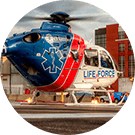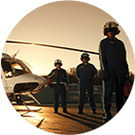Extreme sports offer an adrenaline rush and a sense of adventure that attracts millions of people. Understanding the risks associated with extreme sports is crucial for ensuring safety and preparedness for the inevitable accident. Motocross, rock climbing and surfing, for example, each present unique challenges and dangers that participants must be aware of. From collisions, to drownings, to falls – each sport has its own inherent risks. Recent news articles highlight the real-life consequences of accidents in these sports, emphasizing the importance of proper training and equipment. By understanding these risks, individuals can take necessary precautions and enjoy their extreme sports experiences more safely and be better prepared for when accidents occur.
Extreme Sports Injuries
Motocross attracts those extreme sports enthusiasts who like their action at high speed. While on professional tracks, risk is mitigated by not only track design but also required safety equipment; amateur motorcross riders might forgo some of those safety measures. A recent motocross accident, for example, occurred in Texas where a rider was injured after attempting a jump at the local track. Suffering significant injuries, the rider was airlifted for medical treatment at a local trauma center.
Rock-climbing elevates adventure sports to unprecedented heights but carries the risk of serious injuries due to falls. Even minor injuries may require air evacuations, given the remote nature of many rock-climbing sites. Since people tend to travel for the best rock-climbing routes to states like Colorado and Montana, when those serious injuries occur, they would prefer returning to a hospital close to home for ongoing care for their injuries. Recently, in Yosemite, a rock-climber fell from El Capitan, striking their head on a rock. The seriousness of their injury and remoteness of the location required air ambulance transport to a local trauma center.
Surfing is an adventure sport that carries not only mechanical injury risk, but danger from wildlife lurking under the waves. From shark attacks to crushing injuries against submerged rocks or reefs, surfing is not a sport without risk. When people visit big breaks everywhere from northern California to Hawaii, it’s natural to want to try a hand at riding the waves. Unfortunately, even professionals can find themselves seriously injured, like professional surfer Makai McNamara, who suffered a serious head injury at Pipeline after striking the reef.
No matter what adventure sport you participate in, it’s important to know the overarching safety skills and tips needed before you head out with friends or family.
Know CPR
Having the ability to keep oxygenated blood flowing is so important to survivability in an accident. Many “hands only” CPR classes are taught every year; find one in your area.
Learn Stop the Bleed
There are free classes across the country to teach this important lifesaving skill to manage bleeding from accidents and injury.
Bring a good first aid kit
Help may not be close. Having a good first aid kit can buy a little time after a serious injury while practicing an extreme sport.
Don’t lose contact
A satellite phone for more remote areas is a must to be able to request help when it’s needed.
Learn the risks
Each area has its own inherent risks. Become familiar with them before undertaking any extreme sport in a new location.
Make sure your air medical care is covered as well. Especially from remote areas, air medical care for serious injuries is the gold standard. Your travel insurance may exclude injuries from extreme sports, leaving you financially responsible for air ambulance and hospital care.* With AirMedCare Network membership and transportation by our air ambulance crews, you’ll have no out-of-pocket costs for an air ambulance flight. If you travel to enjoy your extreme sports, consider Fly-U-Home membership to ensure long-distance air medical transportation is a cost-free option to continue your recovery in a hospital closer to home. Be safer with good planning for both your personal and financial well-being!
Frequently Asked Questions:
If an AirMedCare Network Provider does not transport you, you will be responsible for payment. Our membership program only covers transports provided by our affiliates.
There is no limit to the number of transports a member may take in a year. Each transport is handled the same way and must be an emergent or time-sensitive transport as determined by a physician (or other appropriate provider) or first responder unaffiliated with AMCN.
With an AirMedCare Network membership, any person or persons who reside under one (residential) roof are covered. In the event we have a member who lives in a duplex or apartment complex, we designate the primary member’s residence/address— that is considered the “one roof”. Undergraduate college students can be covered under their parent’s membership as well as anyone previously residing in the household who is then moved to a permanent care facility.

Rural Communities and Limited Access to Healthcare
When Time is a Factor Imagine you’re a rancher in South Dakota or another state where hospitals are often a great distance from small towns

Does Medicare cover Air Ambulances?
Why to Consider AirMedCare Network Membership Imagine needing emergency medical help and not worrying about the cost. That’s what AirMedCare Network (AMCN) offers. With over

Tips for Staying Healthy on a Cruise
Cruising blends adventure with relaxation while exploring the world. But with so many fellow travelers on board in close quarters, endless temptations at the buffet




